#she's from 1960s mexico
Explore tagged Tumblr posts
Text

Born to love, made to frack.
Wanted to make a cyborg 009 oc. Here is a 0019 design. Her design is less of a cyborg soldier and more of a terraformer. She can shoot some pressurized water.
#cyborg 009#my art#she's from 1960s mexico#there are only 2 female cyborgs (if u don't count the god ones) i gotta change that#black ghost as a company would be misogynistic i think. female cyborgs would likely have less soldier designs#also in my au i don't kill 0013 because i like that guy#although i don't like the new cyborgs in the devilman crossover i can consider their numbers as taken
9 notes
·
View notes
Text
"I had to fight to be myself and to be respected. I'm proud to say I'm a lesbian. I don't talk about it too much, but I don't deny it. I've had to confront society and the Church, which says that homosexuals are condemned. It's absurd! How can they judge someone who was born that way? I didn't learn to be a lesbian, nobody taught me to be the way I am. I was born this way. I've never slept with a man. I've never slept with a man. Yes, I'm a virgin and I'm not ashamed. My Gods made me this way"
- Chavela Vargas

Chavela Vargas (María Isabel Anita Carmen de Jesús Vargas Lizano) was a Mexican singer of Costa Rican origin, born in 1919 in Costa Rica and died in 2012 in Mexico.
She is considered a leading figure in ranchera music, which she sang with strength and emotion. Her voice, rough and warm at the same time, served her theatrical, passionate and human interpretations of standards from the traditional Mexican repertoire.
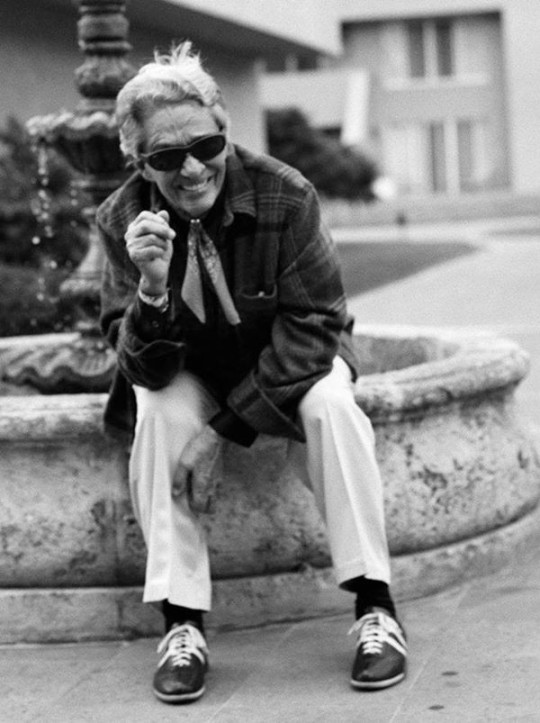
"And since I have to say it almost everywhere, I'll say it: my parents didn't want me. I suffered for it".
She has an extremely difficult and conflicted relationship with her family, who do not accept her in any way. As a teenager, she left her country and her family for Mexico. The young woman rejected and criticised the ultra-conservative society in which she lives. Once in Mexico, she began singing in the streets.
In the 1940s, she became friends with the painters Diego Rivera and Frida Kahlo, staying with them for a while and becoming Frida Kahlo's lover.
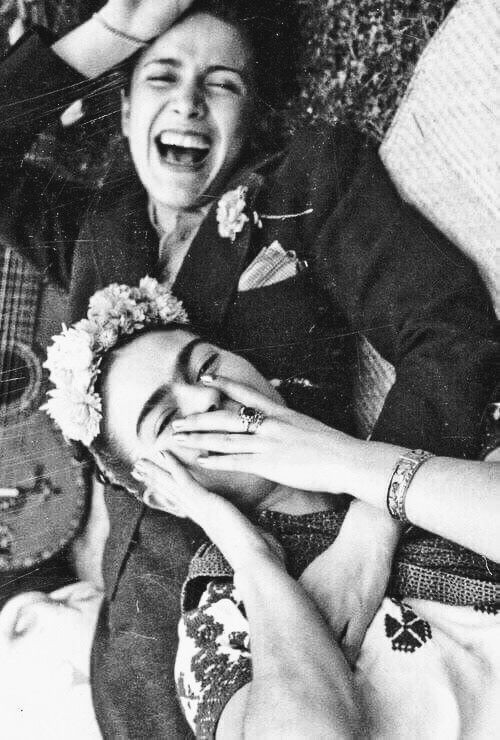
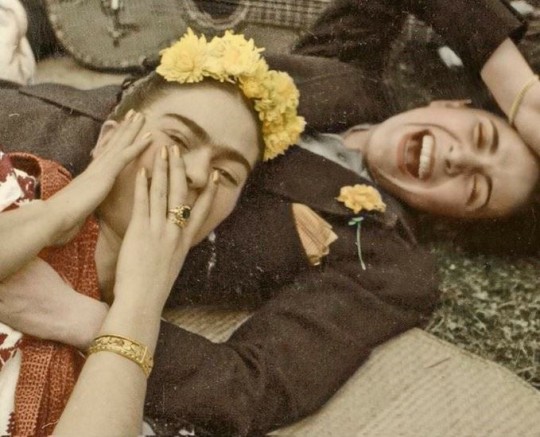
At the age of 30, she was noticed on Mexico City's Avenida Insurgentes by the composer and famous rancheras singer José Alfredo Jiménez, who became the author of her main hits. With his help, she performed in the cabarets of Mexico City in the mid-1950s before embarking on the road to success in Acapulco, an international tourist destination, where she sang at one of Elizabeth Taylor's weddings.

Chavela Vargas rose to fame in the 1960s and 1970s, touring the world. She became a well-known figure in ranchera song, to which she gave a new lease of life.
Dressed like a man, smoking and drinking like a man, carrying a pistol, "the lady with the red poncho, silver hair and brown flesh" as the Spanish singer Joaquín Sabina described her, is characterised by her red sarape.
In a television interview in 2000, she came out as a homosexual woman. This is where the text at the beginning of the post is from!
Chavela's career reached its peak from the recording of her first album (Noche de Bohemia) in 1961 until the end of the 1970s. This was followed by a long period of fifteen years, during which the singer, suffering from a heavy addiction to alcohol, interrupted her musical career, which she did not resume until 1991.
Encouraged by her friend, the director Pedro Almodóvar, who compared her to Édith Piaf, Chavela embarked on a world tour, performing at the Olympia in Paris and Carnegie Hall in New York. Among her most outstanding performances was Tú me acostumbraste by Frank Domínguez in Pedro Almodóvar's film Babel. Being a close friend of Pedro, she has appeared in several of his films, including The Flower of My Secret.
Following a final concert in Madrid on 10 July 2012 to present her album (La Luna Grande), she was hospitalised in the Spanish capital with serious respiratory problems. She died on 5 August 2012, aged 93.
I am sure you know at least one of her song, La Llorona !
In any case, Chavela was an immense artist who had a profound impact on music, and I'm delighted to have discovered her, or rather re-discovered her. I listened to some of her songs and they're amazing if you like that kind of music ! And please look her up yourself, she was such an interesting person, I couldn't talk about everything in this post or it would have been too long !
#chavela vargas#music#mexican music#ranchera music#lesbian#lesbian pride#lesbian history#pride#lesbian culture#lesbian artist#female homosexual#female homosexuality
196 notes
·
View notes
Text
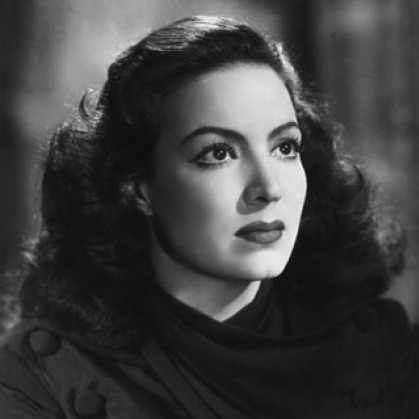

Propaganda
María Félix (Doña Barbara, La Mujer sin Alma, Rio Escondido, La Cucaracha)—Maria Felix is still possibly the most well-known Mexican film actress. She turned down multiple-roles in Hollywood and a contract with Metro-Goldwyn-Meyer in order to take roles in Mexico, France, and Argentine throughout the 1940s, 50s, 60s. She was so famous and so respected as a dramatic actress that she inspired painters, novelists and poets in their own art--she was painted by Diego Rivera, Jose Orozco, Bridget Tichenor. The novelist Carlos Fuentes used her as inspiration for his protagonist in Zona Sagrada. She inspired an entire collection by Hermes. In the late 1960s Cartier made her a custom collection of reptile themed jewels. She considered herself to be powerful challenger of morality and femininity in Mexico & worldwide--she routinely played powerful women in roles with challenging moral choices and free sexuality. But even still, years after he death, she is celebrated with Google Doodles, and appearances in the movie Coco, and holidays for the anniversary of her death.
Maureen O’Hara (The Parent Trap, The Quiet Man)—They called her the Queen of Technicolor. That right there should help introduce people to the fiery, wonderful, stunning Maureen O’Hara. She was from Ireland, born in 1920, and started in theater at the age of ten. At 15, she was winning drama awards, including one for her performance as Portia in the Merchant of Venice. At 16, she was the youngest pupil to graduate from the Guildhall School of Music. By 18, she transitioned to film, starting off with a bang alongside Charles Laughton in Hitchcock’s Jamaica Inn, and proceeded to work steadily up through the early 1970s. She was in adventures and comedies and romances, spent a lot of time in westerns giving merry hell to John Wayne (and less merry hell to the indomitable John Ford — she held her own even when he was verbally abusive and demeaning to her). She was in The Quiet Man, which was the first American-made film entirely filmed in a foreign country. She helped make American Christmas what it is with Miracle on 34th Street. She played a lineup of headstrong, forthright women second only, perhaps, to Katharine Hepburn. She was married three times, lived for a while with a boyfriend in Mexico, sued for custody of her daughter in the 1950s, AND sued a magazine for libel in the same era. After mostly retiring from acting, she edited a magazine. She eventually sold the magazine to spend more time with her grandson, but even then ran a ladies fashion store. She was an outspoken, brilliant, passionate lady, with amazing red hair, a career to envy, and — well — that face!
This is round 2 of the tournament. All other polls in this bracket can be found here. Please reblog with further support of your beloved hot sexy vintage woman.
[additional propaganda submitted under the cut]
María Félix:

She's Thee Hot Vintage Movie Woman of México. She's absolutely gorgeous and always looks like she's about to step on you. you WILL be thankful if she does.
"María Félix is a woman -- such a woman -- with the audacity to defy the ideas machos have constructed of what a woman should be. She's free like the wind, she disperses the clouds, or illuminates them with the lightning flash of her gaze." - Octavio Paz
María Félix is one of the most iconic actresses of the Golden Era of Mexican Cinema. La Doña, as she was lovingly nicknamed, only had one son, and when her first marriage ended in divorce her ex-husband stole her only child, so she vowed that one day she’d be more influential than her ex and she’d get her son back. AND SHE DID! María Félix rejected a Hollywood acting role to start her acting career in Mexico on her own terms with El Peñón de las Ánimas (The Rock of Souls) starring alongside actor, and future third husband, Jorge Negrete. She quickly rose to incredible heights both in Mexico and abroad, later on rejecting a Hollywood starring role (Duel in the Sun) as she was already committed to the movie Enamorada at the planned filming time. Of this snubbing she said, quote: “I will never regret saying no to Hollywood, because my career in Europe was focused in [high] quality cinema. [My] india* roles are made in my country, and [my] queen roles are abroad.” (Translator notes: here the “india” role means interpreting a lower-class Mexican woman, usually thought of indigenous/native/mixed descent —which she had interpreted and reinvented throughout her acting career in Mexico— and what abroad was typically considered the Mexican woman stereotype, with the braids, long simple skirts, and sandals. This also references the expectation of her possibly helping Hollywood in perpetuating this stereotype for American audiences that lack the cultural and historical contexts of this type of role which would undermine her own efforts against this type of Mexican stereotypes while working in Europe) She was considered one of the most beautiful women in the world of her time by international magazines like Life, París Match, and Esquire, and was a muse to a vast number of songwriters (including her second husband Agustin Lara,), artists, designers, and writers. Muralist Diego Rivera described her as “a monstrously perfect being. She’s an exemplary being that drives all other human beings to put as much effort as possible to be like her”. Playwriter Jean Cocteau, who worked with her in the Spanish film La Corona Negra (The Black Crown) said the following about her, “María, that woman is so beautiful it hurts”. Haute Couture houses like Dior, Givenchy, Yves Saint Laurent, Balenciaga, Hérmes, among others, designed and dressed her throughout her life. She died on her birthday, April 8, 2002, at 88 years old, in Mexico City. She was celebrated by a parade from her home to the Fine Arts Palace in the the city’s Historic Downtown, where a multitude of people paid tribute to her. Her filmography includes 47 movies from 1942 until 1970, and only two television acting roles in 1970. She has 2 music albums, one recorded with her second husband, Agustín Lara, in 1964 titled La Voz de María y la inspiración de Agustín «The voice of María and the inspiration of Augustín», and her solo album Enamorada «In Love» in 1998. Her bespoke Cartier jewelry is exhibited alongside Elizabeth Taylor’s, Grace Kelly’s and Gloria Swanson’s. In 2018, Film Director Martin Scorsese presented a restored and remastered version of her film Enamorada in the Cannes Classics section of the Cannes Festival and Google dedicated a doodle for her 104th birthday. On august 2023 Barbie added her doll to the Tribute Collection.

Maureen O'Hara:
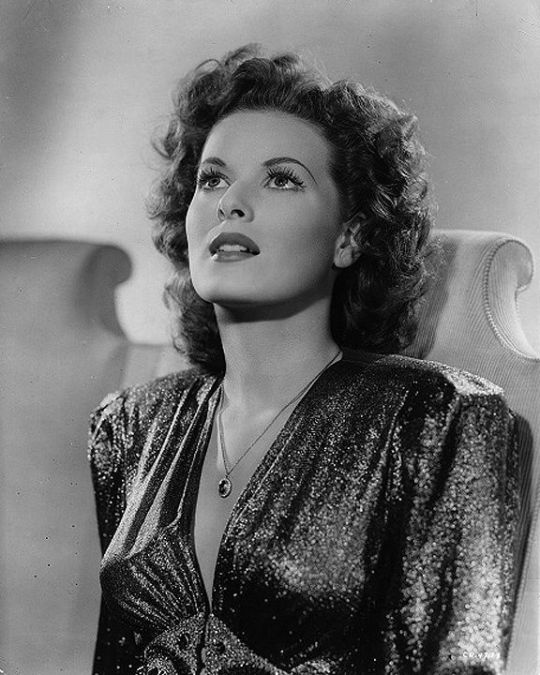
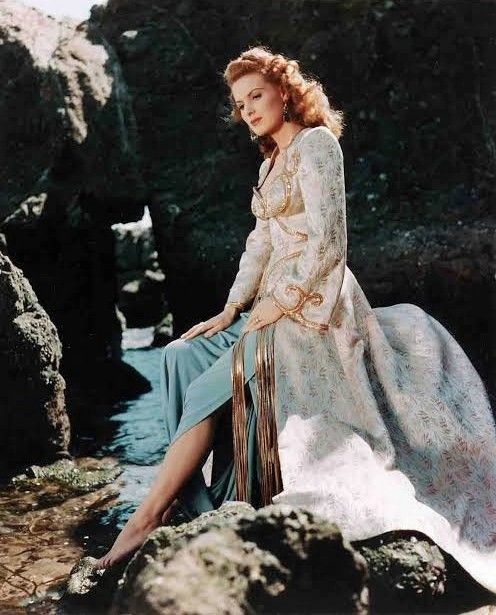
I thought she was one of the most beautiful women in the world when I was a kid and I have yet to really change my mind. Always loved her temper and her red hair. Plus she was kind of a MILF in The Parent Trap

Haughty, red hair, hot.
I would have to give up my passport if I didn't submit Maureen O'Hara but also have you seen her? Not only did she look like that (she was called the Queen of Technicolor, though she wasn't a big fan of that sobriquet), she was also very funny and tough as nails. She faced off against Walt Disney in a contract dispute and the legend goes that when someone mentioned her at his deathbed, he sat up and said 'That bitch!'. Her comment on that story is "At least he didn't think of me and say, 'That wimp'." She struggled to get serious roles for a time, saying ""Hollywood would never allow my talent to triumph over my face," so she plays the sexy princess/pirate/harem girl in a LOT of early movies that she referred to as "Tits and Sand" films, she being the tits in question. She also turned down so many leading men and studio bosses (Errol Flynn and Howard Hughes are among her rejects) that there were rumours spread that she was a lesbian. Many egos were battered it seems. I'm including the infamous Lady Godiva scene in the photo propaganda for the sheer Moment of it [link] . It was a bit of a flop critically, but it was one of Clint Eastwood's first film appearances and she said he told her later that he was very glad of the money at the time.
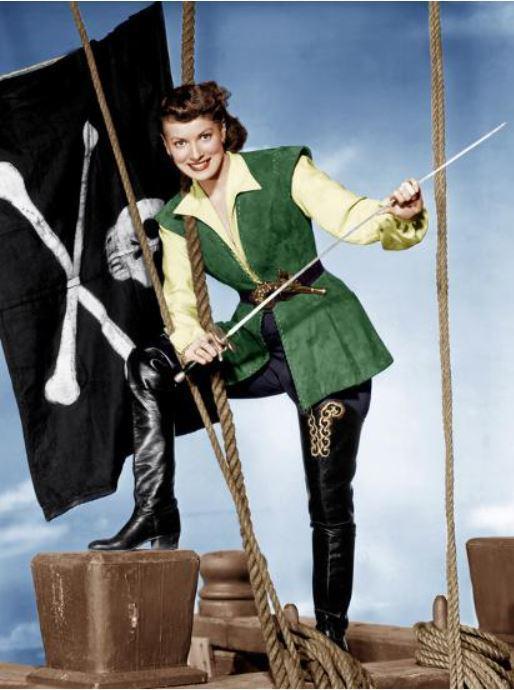

She was a very proud Irish woman and when she went for her American citizenship they insisted on referring to her as British (the timeline of Irish independence is a bit wibbly wobbly, we won't get into it here). She refused to accept American citizenship under that condition and argued her way through every level of US immigration she could find, supposedly saying "I'm not responsible for your antiquated records here in Washington", until a judge finally gave up and said "Give her what she wants, just get her out of here". This made her the first ever person seeking US citizenship to be proclaimed Irish on the record!
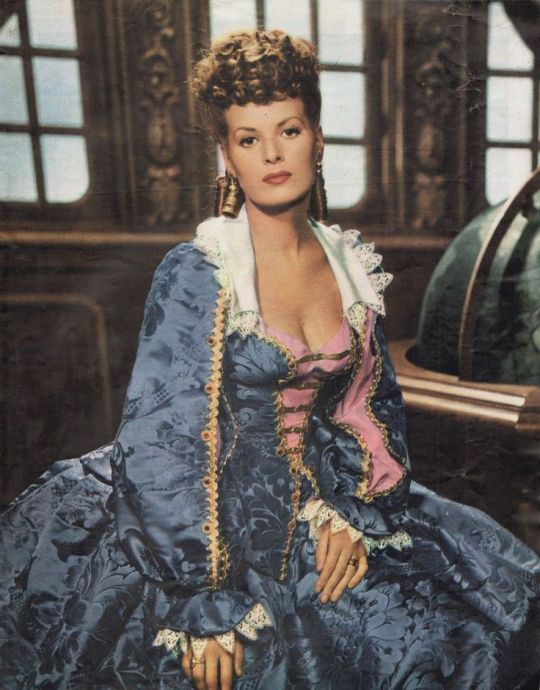
The hair. The accent. The figure. The acting chops. The perfection.

174 notes
·
View notes
Text

During WWI, Van Johnson became a Hollywood star playing a freckle-faced soldiers, sailors, or bomber pilots who were the boy-next-door".
While making “A Guy Named Joe” (1943) Johnson was in serious car accident. His injuries required a metal plate inserted in his forehead and plastic surgery to try and hide the scars.
At the height of his career, Johnson was the second highest-paid actor (behind Bing Crosby) and MGM’s most valuable asset. He received 50,000 fan letters a month. But 1947, MGM Studio head Louie B Mayer became concerned about rumors that Johnson was a homosexual.
When asked about his love life or why he wasn’t married, Johnson joked that he was married to MGM
But Playwright Arthur Laurents wrote years in his own autobiography that Johnson been caught “performing” in public restrooms.
Mayer insisted that Johnson get married. The problem was that the only woman he would consider was Eve Abbott, who was already married to his best friend Keenan Wynn. Mayer blackmailed Abbott, threatening Keenan Wynn’s contract would not be renewed unless she divorced him and married Johnson.


So on January 25, 1947, Wynn & Abbott drove to Mexico and got a quickie divorce, then drove to Hollywood where Abbott and Johnson were married. Believe it or not, Keenan Wynn stayed friends with both of them.
(This is based on an interview with Abbott shortly before her death in 2004.)
Keenan’s father actor Ed Wynn once described the situation:
"I can't keep them straight. Evie loved Keenan. Keenan loves Evie. Van loves Evie. Evie loves Van. Van loves Keenan. Keenan loves Van."
By the 1960s, Johnson transition to mostly making guest appearances on Tv shows (including 2 episodes of Batman in 1966, playing the villain the Minstrel).

Johnson also pursued the theater, appearing in a number of stage musical, including “The Music Man” in London in 1961. This led to Johnson’s divorce to Abbott.

According to Abbott, in 1961, she discovered her husband was having an affair with the lead dancer in the London production of “The Music Man”.

Abbott son Ned Wynn wrote that his mother told him that Johnson had left her "for a man - a boy, really. He's the lead boy dancer."
The marriage was over but they didn’t finalize their divorce until 1968. Johnson himself said it was acrimonious, “the ugliest divorce in Hollywood history".
Johnson continued to perform in regional theater and occasional on television. He died of natural causes in 2008. (No word on what happened to that dancer from The Music Man.)

#gay icons#van Johnson#keenan wynn#eve abbott was his beard#closeted actors#Louie b Mayer#boy-next-door#batman 66#The Minstrel#an affair with the chorus boy#MGM Star#quickie divorce
37 notes
·
View notes
Text


















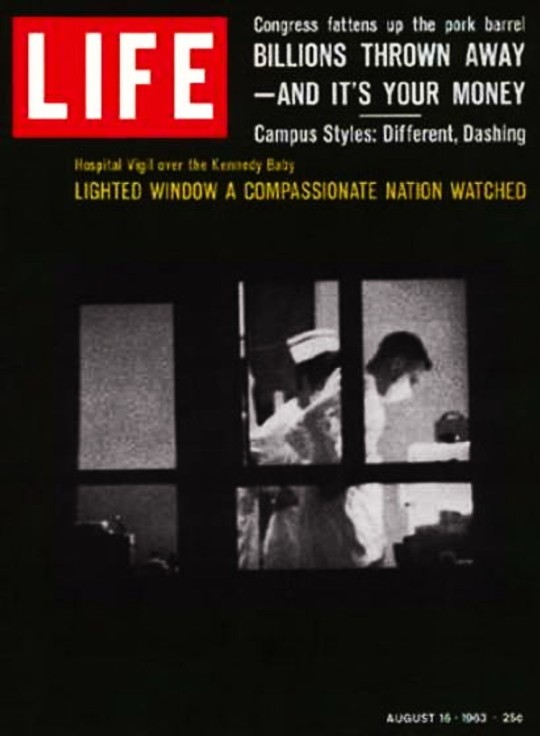

The Kennedys' on LIFE magazine (Part 1/3)
"Senator Goes A-Courting" (John F. Kennedy & Jacqueline Bouvier), July 20, 1953.
"Author Kennedy" (John F. Kennedy), March 11, 1957.
"Jacqueline, Caroline and Jack Kennedy", April 21, 1958.
"Jackie Kennedy A Front Runner's Appealing Wife" (Jackie & John F. Kennedy), August 24, 1959.
"Hubert And Jack In Wisconsin" (John F. Kennedy), March 28, 1960.
"The Victorious Young Kennedys" (Rose Kennedy, Jackie Kennedy, John F. Kennedy and Jean Kennedy Smith), November 21, 1960.
"The Kennedys And Their Son At Christening" (John F. Kennedy, Jackie Kennedy & John F. Kennedy Jr,), December 19, 1960.
"The Kennedy Inauguration" (John F. Kennedy & Jackie Kennedy), January 27, 1961.
"The Kennedys In Canada" (Jackie Kennedy), May 26, 1961.
"Kennedy In Paris" (John F. Kennedy), June 9, 1961.
"Any dangerous spot is tenable if brave men will make it so" (John F. Kennedy), August 4, 1961.
"The First Lady She Tells Her Plans For The White House" (Jackie Kennedy), September 1, 1961.
"Year-old JFK Jr. Plays with Gifts from Charles de Gaulle" (John F. Kennedy Jr.), November 24, 1961.
"Hard-headed, Hard-driving, Kid brother Capital's No.2 man, Bob Kennedy closes in" (Robert F. Kennedy), January 26, 1962.
"The Senate Seat Scramble In Massachusetts; Head on Collison of Three Political Clans: Eddie McCormack, Teddy Kennedy & George Lodge" (Edward M. Kennedy), June 29, 1962.
"Kennedy In Mexico City" (John F. Kennedy), July 13, 1962.
"The Fun Of Being Caroline" (Caroline Kennedy), September 7, 1962.
"Charming Album Of Jackie Growing Up" (Jackie Kennedy), April 26, 1963.
"Hospital Vigil Over Kennedy Baby: Lighted Window A Compassionate Nation Watched", August 16, 1963.
"President John F. Kennedy 1917-1963" (John F. Kennedy), November 29, 1963.
#on the cover#life magazine#the kennedys#john f. kennedy#jfk#jackie kennedy#caroline kennedy#rose kennedy#jean kennedy smith#john f. kennedy jr.#robert f. kennedy#rfk#edward m. kennedy#ted kennedy#1950s#1960s
86 notes
·
View notes
Text
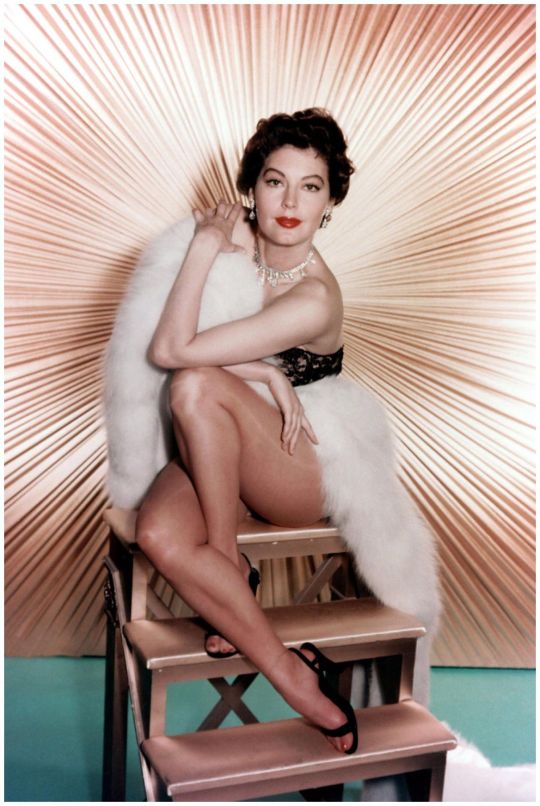
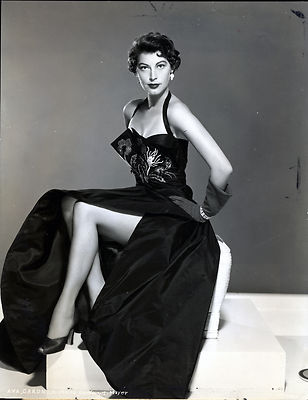
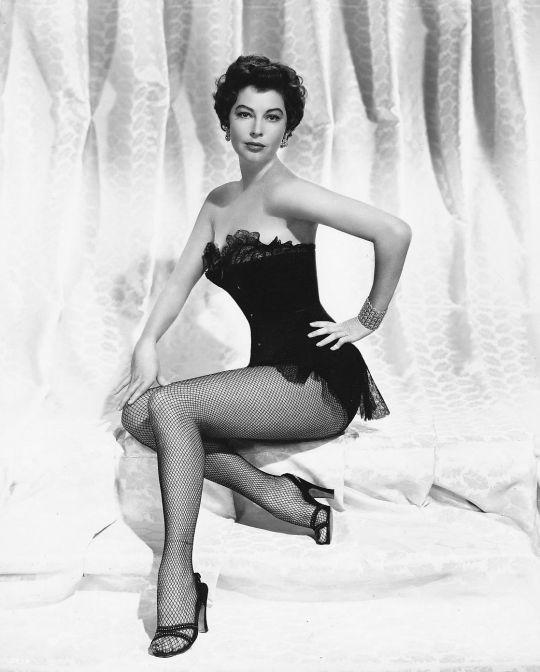
Films from the next decade or so include The Hucksters (1947), Show Boat (1951), The Snows of Kilimanjaro (1952), Lone Star (1952), Mogambo, nominated for a Best Actress Academy Award (1953), The Barefoot Contessa (1954), Bhowani Junction (1956), The Sun Also Rises (1957) and On the Beach (1959). Off-camera, she could be witty and pithy, as in her assessment of director John Ford, who directed Mogambo ("The meanest man on earth. Thoroughly evil. Adored him!"). In The Barefoot Contessa, she played the role of doomed beauty Maria Vargas, a fiercely independent woman who goes from Spanish dancer to international movie star with the help of a Hollywood director played by Humphrey Bogart, with tragic consequences. Gardner's decision to accept the role was influenced by her own lifelong habit of going barefoot. Gardner played the role of Guinevere in Knights of the Round Table (1953), with actor Robert Taylor as Sir Lancelot. Indicative of her sophistication, she portrayed a duchess, a baroness and other women of noble lineage in her films of the 1950s.
Gardner played the role of Soledad in The Angel Wore Red (1960) with Dirk Bogarde as the male lead. She was billed between Charlton Heston and David Niven for 55 Days at Peking (1963), which was set in China during the Boxer Rebellion in 1900. The following year, she played her last major leading role in the critically acclaimed The Night of the Iguana (1964), based upon a Tennessee Williams play, and starring Richard Burton as an atheist clergyman and Deborah Kerr as a gentle artist traveling with her aged poet grandfather. John Huston directed the movie in Puerto Vallarta, Mexico, insisting on making the film in black-and-white – a decision he later regretted because of the vivid colors of the flora. Gardner received billing below Burton, but above Kerr. She was nominated for a Golden Globe Award for Best Actress in a Motion Picture – Drama and BAFTA Award for Best Actress in a Leading Role for her performance.
55 notes
·
View notes
Text

Woman's $3.99 Thrift Store Find Is a Priceless 2,000-Year-Old Mayan Vase
It’s the find of the millennium - well, two. It turned out to be much more. The vase dated back 2,000 years, and her
Anna Lee Dozier knack for second-hand shopping near her Washington, DC, home paid off big time. She was in a Maryland thrift store in 2019 and found a vase on the clearance rack for just $3.99.
“I saw this vase, and I assumed it was like a tourist reproduction,” Dozier told The Independent. “It did look old, but I was thinking a 20- or 30-year-old tourist reproduction.”
It turned out to be much more. The vase dates back two millennia. Her thrifty find was, in fact, priceless.
For five years after finding the vase on the clearance rack, Dozier kept the vase at home, she said, not thinking twice about it until she went on a trip Mexico’s Museum of Anthropology in January. There, Dozier said she saw vases that reminded her of her thrift store find, so she asked the staff what to do if she might have an artifact.


The museum staff told her to contact the US embassy.
“I came back to DC not thinking it could really be something, and I didn't want to bother the embassy, so I googled some professors who were experts on Mayan or Mexican history,” she told The Independent. When no one responded, Dozier reached out to the embassy, where staff asked her to send detailed pictures of the vase.
A month later, Dozier learned it was a ceremonial urn from the Mayan community dating anywhere from the year 200 to 800.
After learning she had thrifted a priceless, ancient artifact, Dozier was connected with the Cultural Institute of Mexico, where a ceremony was held Monday for the vase’s return. It will now make its way to Mexico’s Museum of Anthropology for analysis.
Dozier, who works as a human rights advocate for Mexico’s Indigenous communities, said she was glad to be a part of the vase’s journey home.


“Human rights extend to culture and history,” Dozier said at the event on Monday.
Dozier isn’t the first to accidentally stumble upon an ancient artifact.
In 2017, an Italian marble expert discovered a 2,000-year-old Roman mosaic was being used as a coffee table in a Manhattan apartment for the last 50 years.
The apartment owners thought nothing of it when they purchased the table from an Italian noble family in the 1960s, they said at the time. It has since been returned to the Italian government.
By Katie Hawkinson.

#Woman's $3.99 Thrift Store Find Is a Priceless 2000-Year-Old Mayan Vase#thrift store finds#ancient artifacts#archeology#archeolgst#history#history news#ancient history#ancient culture#ancient civilizations#mayan history#mayan culture#mayan mythology#mayan art#ancient art#lost and found
32 notes
·
View notes
Text
The Quiapo district of Manila is located just outside the walled city of Intramuros. It became a natural extension when the city was expanding during the Spanish colonial times, and it was the address of choice for the well-heeled Filipino mestizo families, especially at Hidalgo Street, where rows of bahay na bato (house of stone) competed against each other in terms of grandeur and size. Many of these houses now lie in various states of decay. But the most prominent one, the century-old Bahay Nakpil-Bautista (Nakpil-Bautista House) still stands.
Built in 1914 by Arcadio Arellano for Dr. Ariston Bautista and his wife Petrona Nakpil, the house sat on two lots with a total area of 500 square meters (5,400 square feet). It's a typical style for its period—two stories, with the lower story serving as the zaguan, or parking area for horse-drawn carriages. The stones on the ground floor came from Mexico, and a few pieces of colorful tiles before the stairs came from Spain.
A short set of stairs leads to an elevated sala (living room), a room that serves as a workshop, and a bedroom. The lower story is made of stone and wood. A main stairway brings you to the second story, where the main hall is located to the right and the kitchen and dining area to the left. On both wings are several rooms for the many inhabitants of the house. Large windows in the living room provide a free-flowing circulation of air throughout the house—there were no air conditioning units at the time this house was built.
Several key figures in Philippine history have lived in the Nakpil-Bautista House. Dr. Ariston Bautista, who commissioned the house, was one of the first professors at the University of the Philippines and also invented a medicine to combat cholera. The legendary Gregoria de Jesus, widow of Andres Bonifacio, who founded the revolutionary armed Kataastaasan Kagalang-galang na Katipunan ng mga Anak ng Bayan (KKK) was a leading figure of the women's arm of the organization. After Bonifacio died, she married the musician Julio Nakpil.
The house survived the Japanese bombing in World War II, which damaged 70 percent of Manila. The Nakpil-Bautista family moved out of the house in the 1960s. It has since been used as a community center, a museum, and a classroom for children from the surrounding area during the COVID-19 pandemic. The museum showcases the history of Quiapo, the Nakpil-Bautista family, and the Philippine Revolution.
The National Historical Commission of the Philippines declared the house a cultural property on August 25, 2011. Besides the historical value of the house, it is worth visiting as a perfect representation of the architectural style prevailing during the Spanish colonial period and the early 19th century.
13 notes
·
View notes
Text
Road Trip
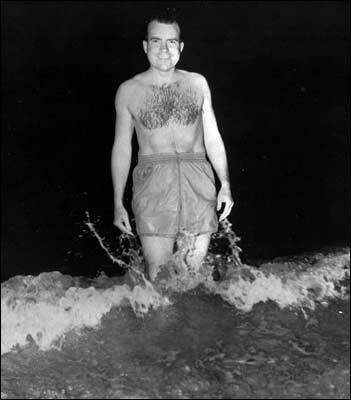
On November 8, 1960, millions of Americans went to the polls in what would become one of the closest Presidential elections in American History: John Fitzgerald Kennedy versus Richard Milhous Nixon.
That morning, Kennedy voted in Boston and Nixon voted in Whittier, California. The candidates had spent months canvassing the nation, working to get every last vote – and every last vote was needed. For the past several weeks, Kennedy and Nixon had criss-crossed the country, debated one another, and been working non-stop to be elected the 35th President of the United States.
After they voted that day, there were results to monitor, precincts to watch, election day problems to take care of, and many other things to worry about. Imagine being on the cusp of the Presidency – with a 50/50 chance of being elected the next President of a superpower in the grip of the Cold War, with the threat of Communism and nuclear weapons hanging over your head, and the hopes of hundreds of millions of people pinned on either your victory or defeat. Imagine being in the position of John F. Kennedy or Richard Nixon on November 8, 1960. What would you do?
John F. Kennedy put the control of his campaign in the hands of his younger brother, Bobby, and then took a nap.
And Richard Nixon took a road trip to Mexico.
Once Nixon voted that morning at a private home in a quiet Whittier neighborhood, he had been scheduled to head to the Ambassador Hotel in Los Angeles (where Bobby Kennedy would be assassinated eight years later) for the Election Day vigil and the long wait for the returns which would indicate whether he would be moving into the White House or facing an early retirement.
Nixon was finished voting by 8:00 AM and hopped into his black Cadillac limousine to be driven to the Ambassador. Several blocks away from the polling place, Nixon ordered the limousine to stop. Along with a military aide and a Secret Service agent, Nixon jumped out of the limo and into a white convertible follow-up car driven by an officer from the Los Angeles Police Department. Nixon took the LAPD officer’s place, got behind the wheel and ditched the press which had been following him.
Driving to La Habra, California, Nixon made a quick visit with his mother, making sure she had voted for her son in the Presidential election. Nixon drove south along the Pacific Coast Highway, with no specific destination. He stopped for gasoline in Oceanside and told a gas station attendant – startled to see the Vice President of the United States on a joyride on the very day that he stood for election as President – “I’m just out for a little ride." Nixon confided that it was his only source of relaxation.
As the group of four men, with Nixon in the driver’s seat, reached San Diego – over two hours away from Nixon’s campaign headquarters at L.A.’s Ambassador Hotel – Nixon pointed out that he hadn’t been to Tijuana in at least 25 years.
As David Pietrusza wrote in his recap of Nixon’s road trip, "Richard Nixon – the ultimate control freak – was winging it on the most important day of his life." Not only that, but the sitting Vice President of the United States and the man who many Americans were choosing to become the next President, impulsively decided to leave the entire country while those voters were still at the polls.
In Tijuana, Nixon and his party headed to a restaurant called Old Heidelberg. Despite the fact it was owned by a German, Border Patrol agents told Nixon that it was the best place in Tijuana for Mexican food. Joined at the last moment by Tijuana’s Mayor, Xicotencati Leyva Aleman, Nixon, his military aide, a Secret Service agent, and an average LAPD officer ate enchiladas in Mexico while John F. Kennedy took a nap in Hyannis Port, Massachusetts.
When Nixon’s press secretary Herb Klein was asked about the missing candidate, he had to tell reporters that Nixon often took some private moments on hectic days such as Election Day. Really, though, Klein had no clue where Nixon was, eventually admitting that the Vice President was "driving around without any destination”.
After lunch in Tijuana, Nixon and his companions headed back north towards the United States border crossing. The LAPD officer took over driving duties as Nixon sat in the convertible’s passenger seat. A shocked Border Patrol guard shook hands with the Vice President and asked the man who was currently on the ballot for the Presidency, “Are you all citizens of the United States?”.
Nixon and company drove to the Mission of San Juan Capistrano, which Nixon called “one of my favorite Catholic places” on the day he faced the first successful Catholic candidate for the Presidency in American History. Nixon took his three companions on a quick, informal tour of the Mission. “For a few minutes, we sat in the empty pews for an interlude of complete escape,” Nixon later recalled.
The missing candidate and his three road trip buddies arrived back in Los Angeles before the election results started rolling in. Nixon had to explain his trip to reporters who had been searching for him all day. “It wasn’t planned. We just started driving and that’s where we wound up.”
In his Memoirs, Nixon didn’t go too far into explaining why he escaped on Election Day, but a paragraph about that day is pretty illuminating:
“After one last frenetic week, it was over. Since the convention in August I had traveled over 65,000 miles and visited all fifty states. I had made 180 scheduled speeches and delivered scores of impromptu talks and informal press conferences. There was nothing more I could have done.”
Except escape to Mexico while JFK slept.
#History#Richard Nixon#President Nixon#Presidents#Presidential History#1960 Election#Presidential Elections#Politics#Political History#Nixon vs. Kennedy#Election Day#Election History#Presidential Politics#Nixon#Nixon Library#John F. Kennedy#JFK#President Kennedy#Presidential Campaigns#Campaign History
52 notes
·
View notes
Text
Ronald Gene Simmons' Christmas Murders

December 07, 2024
Ronald Gene Simmons Sr. was born on July 15, 1940 in Chicago, Illinois. In 1957, Simmons dropped out of school and joined the U.S. Navy, stationed in Washington where he met his wife, Bersabe Rebecca "Becky" Ulibarri, on July 9, 1960.
Between this time and 1978, the couple had 7 children together. Simmons left the Navy in 1963, and by 1965 had joined the U.S. Air Force. Simmons won many awards during his military career.
On April 3, 1981, Simmons was investigated for allegedly having a child with his 17-year-old daughter, Sheila, because he was sexually abusing her. Simmons did not want to be arrested so fled to Arkansas with his family later that year from New Mexico.
The family had a 13 acre piece of land that they would call, "Mockingbird Hill." The home did not have a telephone or indoor plumbing, and had a private fence built around it. Because of no plumbing, Simmons got his family to dig 3 cesspits, which he would later dispose bodies into.
Simmons worked a lot of random jobs during this time, and even quit a position at Woodline Motor Freight after he had multiple reports of sexual advances he was committing.
By the time the killings happened, two of Simmons older children had already moved out, including Sheila, and had families of their own.
Before Christmas 1987, Simmons decided to kill his entire family. On December 22, Simmons killed his wife Rebecca and oldest son Gene, by bludgeoning them with a crowbar and shooting them. He then strangled his 3-year-old granddaughter, Barbara.
Simmons dumped the bodies into one of the cesspits and waited for his other children to return home from school. When the children arrived home, Simmons told them he had presents for them but wanted to give them one at a time. He killed 17-year-old Loretta by strangling her and held her under the water in a rain barrel. His other children, Eddy, Marianne, and Becky were then killed the same way, all of their bodies going into the cesspit.
On December 26, 1987, Simmons two older children arrived home as he had invited them over for the holidays. Simmons then killed his son Billy and his wife, Renata, by shooting them. He then strangled and drowned their 20-month-old son, Trae. Simmons then shot his daughter Sheila, and her husband, Dennis McNulty.
Simmons then strangled his child by Sheila, 7-year-old Sylvia Gail, and then his 21-month-old grandson Michael.
He laid their bodies in neat rows in the lounge, with all of them covered by coats except for Sheila's, who had been covered with their best tablecloth. Trae and Michael's bodies were wrapped in plastic and put in abandoned cars at the end of the lane.
Simmons then drove to a Sears store where he picked up Christmas gifts he had ordered for his family. He went out for a drink at the local bar that night, before returning home to watch tv and drink beer.
On the morning of December 28, 1987, Simmons drove to Walmart where he purchased another firearm. His first target was the law firm where he had previously met a secretary named Kathy Cribbins Kendrick.
Simmons had been infatuated with her but she had rejected him. He walked into the office and shot her. He then went to an oil company office, intending to shoot the owner, Russell "Rusty" Taylor. Russell had also owned the Mini Mart where Simmons resigned. He shot and wounded Taylor, and killed another man, James David Chaffin, who was a total stranger to Simmons. Another employee was also shot at but the bullet missed.
Simmons drove to the Mini Mart where he shot wounded two other people. His final target was his former supervisor, which he shot twice wounding her. He then ordered one of the employees to call the police.
When police arrived, Simmons handed over his gun and surrendered without resistance. Simmons killed two people and injured four others during his rampage.
Simmons underwent psychiatric evaluation where he was found fit to stand trial. He was found guilty on May 12, 1988, for the murders of Kendrick and Chaffin. He was then on trial for the murders of his 14 family members and found guilty on February 10, 1989. He was sentenced to death by lethal injection.
As a potential motive, a family friend claimed that Simmon's wife, Rebecca, had been saving up money to divorce Simmons when the killings happened. During the trial, Simmons actually had to be removed at one point for punching the prosecutor, John Bynum, and trying to get a deputy's handgun, after Bynum introduced a letter between Simmons and Sheila.
The letter stated that Simmons was expressing anger that Sheila told people he was the father of her child, and he would see her in Hell. Simmons refused to appeal his death sentence.
Simmons life was constantly threatened in prison, and he had to be removed from other prisoners. This was due to him refusing to appeal his death sentence -- the others believed he was damaging their own chances of beating their sentences.
On June 25, 1990, Simmons died from lethal injection. None of his surviving relatives would claim the body, and he was buried in a potter's field in Lincoln County, Arkansas.
#true crime#crime#unsolved mysteries#unsolved#homicide#murder#unsolved case#solved#unsolved murder#mystery#family#masscare#arkansas#christmas
15 notes
·
View notes
Text


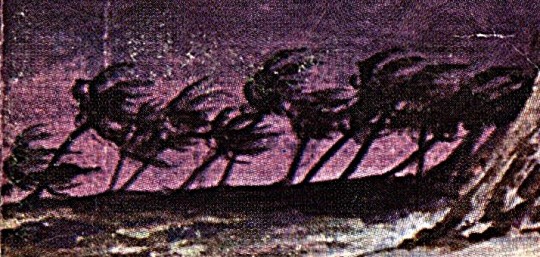






Steamy Saturday
"Love and fear -- there was too much of both. . . ."
"She . . . was on her way to Orestes Island . . . of the handsome and powerful Ramon Orestes."
". . . Sunny's arms went around her and his lips pressed against hers."
". . . her treacherous mouth kissed him in return with an ardor that surprised her."
"She hardly expected to become the fiancee of two men and find herself in love with a third. . . ."
"Avril Andrews was forced to make the most difficult decision of her young life."
"She hardly expected. . . . to face the terror which gripped the entire population of the island."
"She found herself being drawn into web of fear. . . ."
The fiancé of two men, with another guy on the side?! This nurse needs some serious self-control. But then again, the nurse does live on TERROR ISLAND!!!
I chose this book, Nurse on Terror Island by the absurdly prolific romance novelist Doris Knight (b. 1897), published sometime in the 1960s by Modern Promotions, mainly for its bizarre cover art. In the midst of hurricane winds and impending disaster, a couple, with nurse in full regalia, calmly smooch on slippery coastal rocks. Don't they understand the danger? Then again, why should such mundane things bother them. After all, they live on TERROR ISLAND!!!
The story centers on young nurse Avril Andrews who is on residency in Mexico, leaving her fiancé Derek back in England. He is opposed to her leaving and "tired of playing second fiddle to her nursing career" (yeah, time to dump that guy). While there, she gets an opportunity to care for the young ward of rich island landowner Ramon Orestes. The child, an adorable stock-character Mexican boy with zero agency, is fawned over by everyone like an injured puppy, and Orestes, of course, is an oligarchical bastard. Despite Orestes being an overbearing tyrant, the real power on the island rests with his ancient great-great-grandmother Donna Santos, the wealthiest woman on the island who is feared by the locals as a witch as she is constantly casting vindictive supernatural curses on everyone.
Nurse Avril befriends a few locals and begins to fall for the newly-arrived, handsome pop singer Sunny Martin. As Nurse Avril gets closer to Sunny, she learns that he is actually the long-lost brother of one of her local friends, to whom she remarks in disbelief: "But your brother! Sunny is so fair and blue-eyed. You are so -- so Spanish." As a Latino myself, with a grandmother who had fair skin and pale-blue eyes, I take serious issue with this response. Then again, the novel is replete with racial and ethnic stereotypes.
But trouble soon brews over the custody of the hapless "little Domingo," and Donna Santos forces Avril into a marriage with Orestes to give the boy legitimate parents, or else she will take the boy herself and raise him as a witch. Then, when it looks like Avril and Sunny are about to undermine the impending marriage, Witch Santos curses the entire island with destruction by an oncoming hurricane.
Will Nurse Avril forsake Sunny to marry Orestes in order to rescue the island and save little Domingo from a life of evil? Will Donna Santos continue her iron grip and reign of terror on Orestes Island? I'll never tell, especially as this post is already over-long.
View other nurse romance novels.
View other pulp fiction posts.
-- MAX, head of Special Collections
#Steamy Saturday#pulp fiction#nurses#nurse romances#nurse romance fiction#nurse romance novels#romance novels#romance fiction#pulp novels#Doris Knight#Nurse on Terror Island#Modern Promotions#cover art#suspense novels#mystery novels#witches
19 notes
·
View notes
Text









@tak-byvayet tagged me to list 9 books I’m planning on reading in 2025. Now idk how committed I am to this list because it depends on if I can get my hands on all these but I hope! I will probably be sending my library lots of requests this year.
XALA | Ousmane Sembène
A biting satire about the downfall of a businessman-polygamist who assumes the role of the colonialist in French-speaking Africa.
RADICAL INTIMACY | Sophie K. Rosa
Radical Intimacy explores how the capitalist system shapes our intimate lives, and what we can do about it. Through the topics of self-care, romance and sex, family, home, death and friendship, the book looks at the histories and modern realities of these forms of intimacy, and considers what it might mean for things to be otherwise.
STONE BUTCH BLUES | Leslie Feinberg
A powerful and groundbreaking novel that tells the story of Jess Goldberg, a young butch lesbian coming of age in the 1960s and 70s. Set against the backdrop of the gay and feminist movements, the book explores themes of identity, gender, and the struggle for acceptance and belonging.
THE JAKARTA METHOD | Vincent Bevins
A veteran international correspondent uncovers the highly disturbing history of a mid-1960s “apocalyptic slaughter” in Indonesia, Latin America, and beyond, undertaken as part of America’s aggressively anti-communist foreign policy.
EPITAPH OF A SMALL WINNER (The Posthumous Memoirs of Bras Cubas) | Machado de Assis
Regarded as one of the greatest works of Brazilian literature, the book is presented as the memoirs of its protagonist, Brás Cubas, who notes his mistakes and failed romances from beyond the grave.
A MIND SPREAD OUT ON THE GROUND | Alicia Elliott
A bold and profound meditation on trauma, legacy, oppression and racism in North America from an award-winning Haudenosaunee writer. In this urgent and visceral work, Alicia Elliott aptly describes the ongoing effects of personal, intergenerational, and colonial traumas she and so many Native people have experienced.
ANOTHER COUNTRY | James Baldwin
A novel of sexual, racial, political, artistic passions, set in Greenwich Village, Harlem, and France. Stunning for its emotional intensity and sensuality, this book depicts men and women, blacks and whites, stripped of their masks of gender and race by love and hatred at the most elemental and sublime.
BAD FEMINIST | Roxane Gay
A collection of essays examining race, gender and feminism in the United States, paying particular attention to the way media, politics and pop culture shape society's views, and championing a brand of feminism that doesn't always follow the rules.
THE PAPER MENAGERIE AND OTHER STORIES | Ken Liu
Bestselling author Ken Liu selects his award-winning science fiction and fantasy tales for a groundbreaking collection.
Tagging: @fusdoq @molkolsdal @mollymooon @takecarefolks @boredperuvianllamas @kurhanchyk @guillemelgat @wigwamcore @rhubarbspring @hall-der-berge @godzilla-en-mexico @onwaba @nfrtjytj and like anyone else because I’m forgetful and I like seeing what people are reading so I can add to my ridiculously long list…
17 notes
·
View notes
Text
Titan History: Godzilla
Welcome once again to Monarch: After Dark, the digital gateway between you and the organisation dedicated to understanding and navigating this troubled new world we live in.
For today's communication, it was decided by Monarch officials stationed at Castle Bravo (Outpost 54) that we should create an updated historical account on arguably the most recognisable and infamous of the Titans we currently know of; Godzilla.

(Pictured above: aerial footage of Godzilla leaving San Francisco the morning after G-Day, circa. 2014)
Monarch Database File: Godzilla
Monarch Designation: Titanus Gojira
Height: 393 feet
Weight: 99,634 tons
Length: 582 feet (tail)
Nature: Bio-Atomic
Behavioural Classification: Protector
---------------
A member of an ancient reptilian species that was known to exist as early as the Permian period, Godzilla serves as a guardian of the natural order, rising from the depths whenever the balance of the world is threatened, be it by other Titans or by humanity. Newfound information has revealed that, at some point in their early history, the Titanus Gojira species waged war against a population of great apes within the Hollow Earth. The outcome was victory for the former, while the latter migrated to a surface landmass that would become Skull Island, where they would face near-extinction.
Throught the millenia, imagery of these Titans showed their defense of humanity against other Titans, including the seemingly extraterrestrial lifeform, "Monster Zero". These battles were documented well, immortialised in the form of cave paintings and tales passed down through the generations.

(Pictured above: Cave painting documenting a battle between Godzilla and Monster Zero, circa. 1973)
While much of the history surrounding the individual we know today as Godzilla is unknown, his modern history is far clearer. First discovered in 1954 by founding Monarch figures William Randa, Keiko Muira and Leland Shaw, the initial reaction to the Titan's existence was an attempt to kill it using a nuclear weapon. Covered up as the Castle Bravo nuclear test, it was believed that Godzilla had been killed until he resurfaced a year later in Hateruma Island.
His next widely documented appearance was the infamous G-Day in 2014. Tracking down a mating pair of Titanus Jinshin-Mushi (aka MUTOs), Godzilla battled and eventually killed them in San Francisco, though not without extensive damage done to the city and the Golden Gate Bridge beforehand. Months later, he battled with a Jinshin-Mushi Prime, which resulted in the Prime destroying his dorsal plates before she, too, was killed.
According to Keiko Muira, and her grandchildren Cate and Kentaro Randa, who were recovered on Skull Island in 2017 through an "in-between" realm linking the surface to the Hollow Earth, Godzilla responded to a Gamma Radiation Simulator abandoned in the 1960's and battled a large dragon-like creature before they were able to escape. Their account is currently under Monarch investigation.

(Pictured above: Godzilla using an "intimidation display" in front of Monarch's Castle Bravo crew, circa. 2019)
In 2019, a mass Titan outbreak instigated by eco-terrorist Alan Jonah and Monarch paleobiologist Emma Russell called Godzilla to action once again. He first appeared in front of Castle Bravo, where he prepared to attack before the outpost lowered its weapons and calmed him down. He made way to Antarctica, where Monster Zero had recently been awakened. The two battled before the latter Titan retreated.
They clashed again off the coast of Isla de Mara, Mexico, where Godzilla succeeded in tearing off one of Monster Zero's heads. Before this battle could end, likely in Godzilla's favour, the military deployed an experimental superweapon called the Oxygen Destroyer, which severely weakened Godzilla and allowed Monster Zero to escape and regenerate its missing head before usurping control over Earth's Titans.
Their final battle took place in Boston following an evacuation of the city. Godzilla had support from an ally Titan known as Mothra to battle Monster Zero and its own ally, Rodan. The battle ravaged much of Boston, and culminated in Godzilla being dropped from the troposphere and Mothra being killed by a powerful blast from Monster Zero. With some assistance from Monarch and a final gift from Mothra, Godzilla achieved a heightened state of power and caused a thermonuclear explosion that destroyed Boston, and Monster Zero.
Following the battle, other Titans gathered around and bowed before Godzilla, accepting him as their new alpha. In the interim between this and the next major incident, Godzilla would travel the globe and keep other Titans, such as Scylla and Amhuluk, in check.

(Pictured above: Godzilla surrounded by other Titans, bowing down and accepting his claim as the alpha Titan, circa. 2019)
Following a period of minimal Titan activity, Godzilla suddenly surfaced in Pensacola, Florida and destroyed an Apex Cybernetics facility before returning to the depths. In response to this, a joint operation between Monarch and Apex went underway to use another Titan, Kong, to track down an energy source that would give humanity the edge over Godzilla before he could hurt more people.
Godzilla and Kong clashed twice. Their first battle took place in he Tasman Sea, where Godzilla intercepted a naval fleet transporting Kong to Antarctica. This encounter was short-lived, and only a last-ditch effort by ex-Monarch agent Nathan Lind prevented Kong from being killed. Their second brawl in Hong Kong placed Kong on better footing, armed with an axe he obtained within the Hollow Earth, though Godzilla still prevailed and nearly killed Kong.
However, deception from Apex allowed them to siphon the energy from the Hollow Earth into a secret anti-Titan weapon, Mechagodzilla. After losing control of the mecha, it went on a rampage and battled a weary Godzilla nearly to death before a resuscitated Kong intervened. Working together, the two Titans triumphed over Mechagodzilla and parted ways without further conflict.

(Pictured above: Godzilla departing Hong Kong following Mechagodzilla's defeat. To date, this is the last confirmed sighting of Godzilla, circa. 2024)
---------------
And there you go! A simplified but up-to-date account of Godzilla's modern history. We will upload more information regarding him as we are authorized to do so by Monarch officials. We hope you have learned something from this historical account, and we will be back shortly with new information.
Until next time,
Monarch: After Dark
#monarch#monarch after dark#godzilla#titanus gojira#kong#monster zero#monsterverse#godzilla 2014#godzilla king of the monsters#godzilla vs kong#godzilla x kong the new empire
40 notes
·
View notes
Text
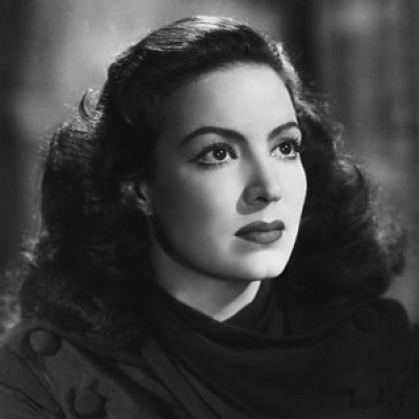

Propaganda
María Félix (Doña Barbara, La Mujer sin Alma, Rio Escondido, La Cucaracha)—Maria Felix is still possibly the most well-known Mexican film actress. She turned down multiple-roles in Hollywood and a contract with Metro-Goldwyn-Meyer in order to take roles in Mexico, France, and Argentine throughout the 1940s, 50s, 60s. She was so famous and so respected as a dramatic actress that she inspired painters, novelists and poets in their own art--she was painted by Diego Rivera, Jose Orozco, Bridget Tichenor. The novelist Carlos Fuentes used her as inspiration for his protagonist in Zona Sagrada. She inspired an entire collection by Hermes. In the late 1960s Cartier made her a custom collection of reptile themed jewels. She considered herself to be powerful challenger of morality and femininity in Mexico & worldwide--she routinely played powerful women in roles with challenging moral choices and free sexuality. But even still, years after he death, she is celebrated with Google Doodles, and appearances in the movie Coco, and holidays for the anniversary of her death.
Marie Doro (Lost and Won)—I had never heard of this woman before the prelims a couple of weeks ago, but oh my GOD I have not been able to stop thinking about her since. Look at her!! She was often typecast as delicate, fragile types on stage and screen, but in real life she was "intelligent, an expert on Shakespeare and Elizabethan poetry, and possessed a penetrating humor and a sometimes acid wit"(!!!!) and known for bringing vibrancy and intelligence to all of her roles. Unfortunately most of her films have been lost, but she was considered a highly sought-after lead actress through the '20s, at which point she retired from acting. In her later years, she went back to school, taking university courses in theology, physics, metaphysics, and philosophy. She was also reportedly close friends with Maude Adams and Mercedes de Acosta, both known for their lesbian relationships, which has led some (me) (but also others) to speculate that she may have been lesbian or bi herself. She has a star on the Hollywood Walk of Fame! She was Charlie Chaplin's first love! She was so beautiful??? I want her to recite poetry for me while we picnic in the park.
This is round 3 of the tournament. All other polls in this bracket can be found here. Please reblog with further support of your beloved hot sexy vintage woman.
[additional propaganda submitted under the cut.]
María Félix:

She's Thee Hot Vintage Movie Woman of México. She's absolutely gorgeous and always looks like she's about to step on you. you WILL be thankful if she does.
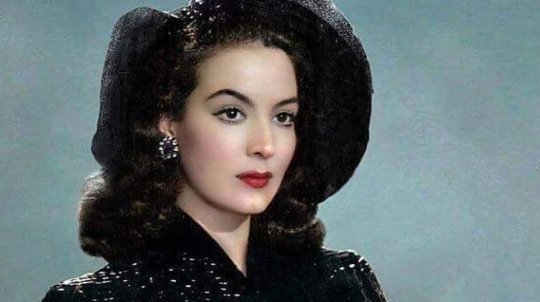
"María Félix is a woman -- such a woman -- with the audacity to defy the ideas machos have constructed of what a woman should be. She's free like the wind, she disperses the clouds, or illuminates them with the lightning flash of her gaze." - Octavio Paz
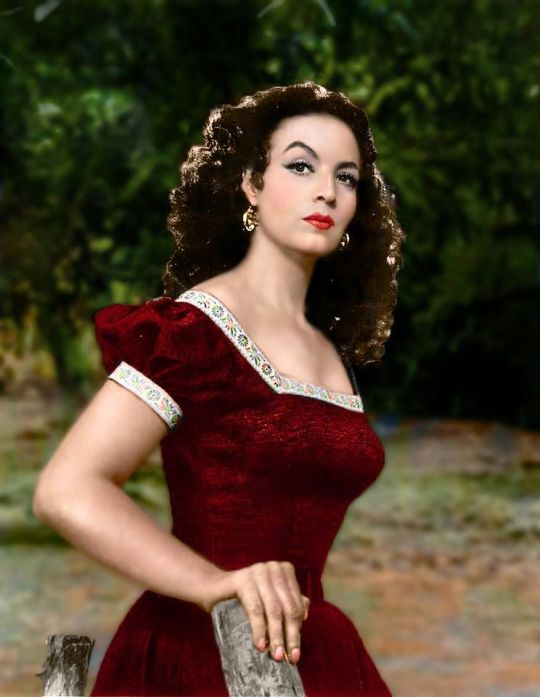

María Félix is one of the most iconic actresses of the Golden Era of Mexican Cinema. La Doña, as she was lovingly nicknamed, only had one son, and when her first marriage ended in divorce her ex-husband stole her only child, so she vowed that one day she’d be more influential than her ex and she’d get her son back. AND SHE DID! María Félix rejected a Hollywood acting role to start her acting career in Mexico on her own terms with El Peñón de las Ánimas (The Rock of Souls) starring alongside actor, and future third husband, Jorge Negrete. She quickly rose to incredible heights both in Mexico and abroad, later on rejecting a Hollywood starring role (Duel in the Sun) as she was already committed to the movie Enamorada at the planned filming time. Of this snubbing she said, quote: “I will never regret saying no to Hollywood, because my career in Europe was focused in [high] quality cinema. [My] india* roles are made in my country, and [my] queen roles are abroad.” (Translator notes: here the “india” role means interpreting a lower-class Mexican woman, usually thought of indigenous/native/mixed descent —which she had interpreted and reinvented throughout her acting career in Mexico— and what abroad was typically considered the Mexican woman stereotype, with the braids, long simple skirts, and sandals. This also references the expectation of her possibly helping Hollywood in perpetuating this stereotype for American audiences that lack the cultural and historical contexts of this type of role which would undermine her own efforts against this type of Mexican stereotypes while working in Europe) She was considered one of the most beautiful women in the world of her time by international magazines like Life, París Match, and Esquire, and was a muse to a vast number of songwriters (including her second husband Agustin Lara,), artists, designers, and writers. Muralist Diego Rivera described her as “a monstrously perfect being. She’s an exemplary being that drives all other human beings to put as much effort as possible to be like her”. Playwriter Jean Cocteau, who worked with her in the Spanish film La Corona Negra (The Black Crown) said the following about her, “María, that woman is so beautiful it hurts”. Haute Couture houses like Dior, Givenchy, Yves Saint Laurent, Balenciaga, Hérmes, among others, designed and dressed her throughout her life. She died on her birthday, April 8, 2002, at 88 years old, in Mexico City. She was celebrated by a parade from her home to the Fine Arts Palace in the the city’s Historic Downtown, where a multitude of people paid tribute to her. Her filmography includes 47 movies from 1942 until 1970, and only two television acting roles in 1970. She has 2 music albums, one recorded with her second husband, Agustín Lara, in 1964 titled La Voz de María y la inspiración de Agustín «The voice of María and the inspiration of Augustín», and her solo album Enamorada «In Love» in 1998. Her bespoke Cartier jewelry is exhibited alongside Elizabeth Taylor’s, Grace Kelly’s and Gloria Swanson’s. In 2018, Film Director Martin Scorsese presented a restored and remastered version of her film Enamorada in the Cannes Classics section of the Cannes Festival and Google dedicated a doodle for her 104th birthday. On august 2023 Barbie added her doll to the Tribute Collection.
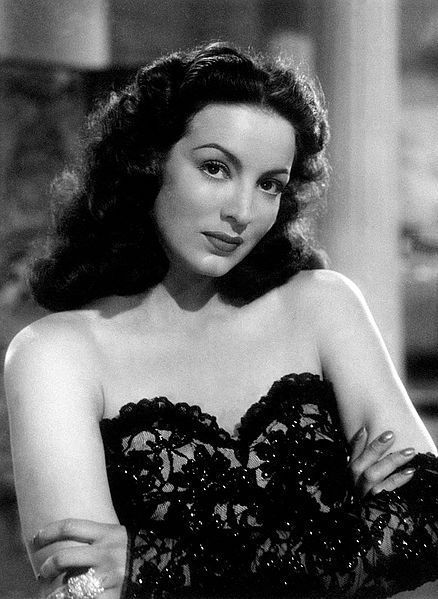
Marie Doro:
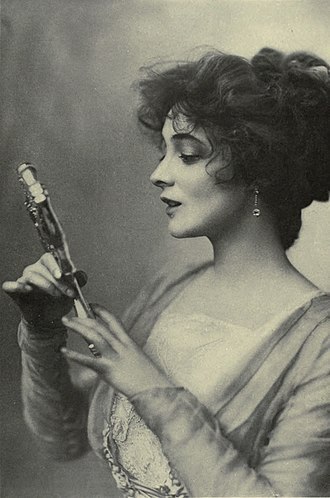
Unfortunately nearly all of Marie Doro’s movies are lost, and I don’t know a lot about her, but as soon as I came across Marie for the first time, I fell in love with her. The early Edwardian era is my favourite decade for fashion, and Marie wears it all so well! In every photo she looks like an angel made out of porcelain, too perfect to be real. She was Charlie Chaplin’s first love, and he remained in love with her for years after their first encounter, and let’s be honest, who can blame him? He said about her in his biography:
‘She was so devastatingly beautiful that I resented her. I resented her delicate, pouting lips, her regular white teeth, her adorable chin, her raven hair and dark brown eyes. But, oh God, she was beautiful! It was love at first sight. At the theatre I would time the moment that she left her dressing room so as to meet her on the stairs and gulp 'good-evening.' When I met Marie Doro again, it was like the second act of a romantic play. After we were introduced I said: 'But we've met before. You broke my heart. I was silently in love with you.' Marie, looking as beautiful as ever, said: “How thrilling”.
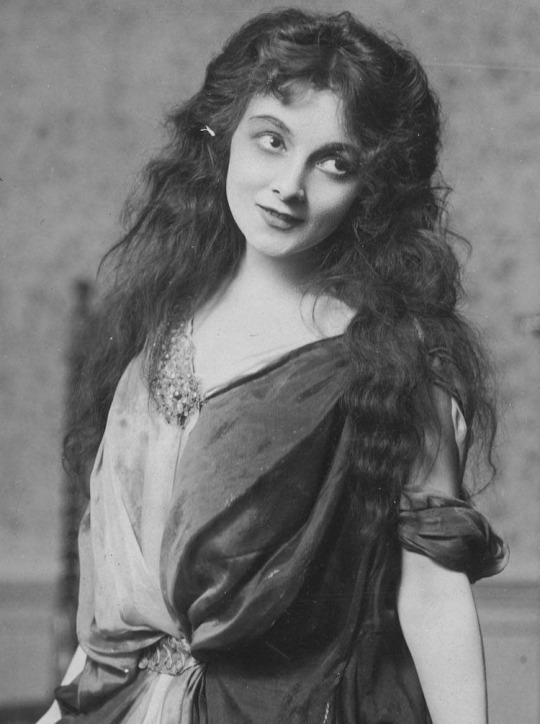
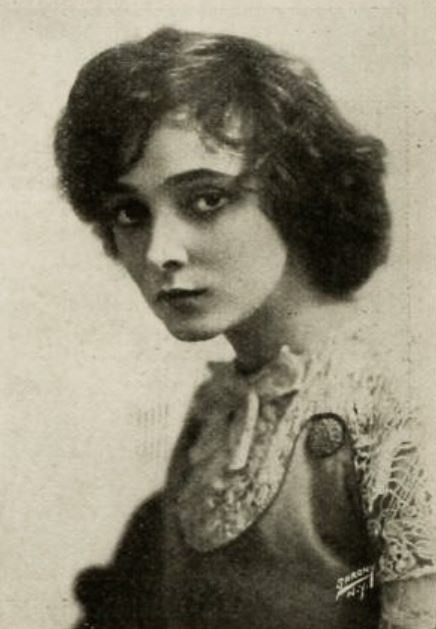
Doro retired from filmmaking in the 1920s and became very reclusive after that, so unfortunately there’s hardly any footage of her to watch. I feel sad that more people don’t know who Marie Doro is, because she’s very important to me.
Linked gifset to see Marie in action

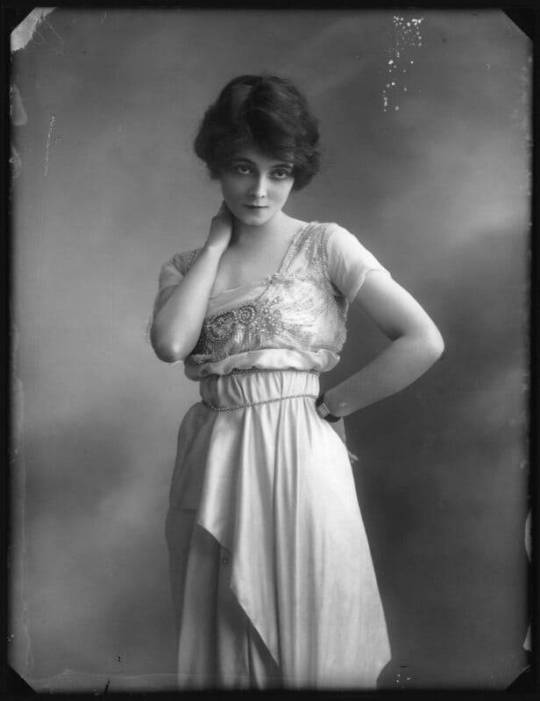
124 notes
·
View notes
Text
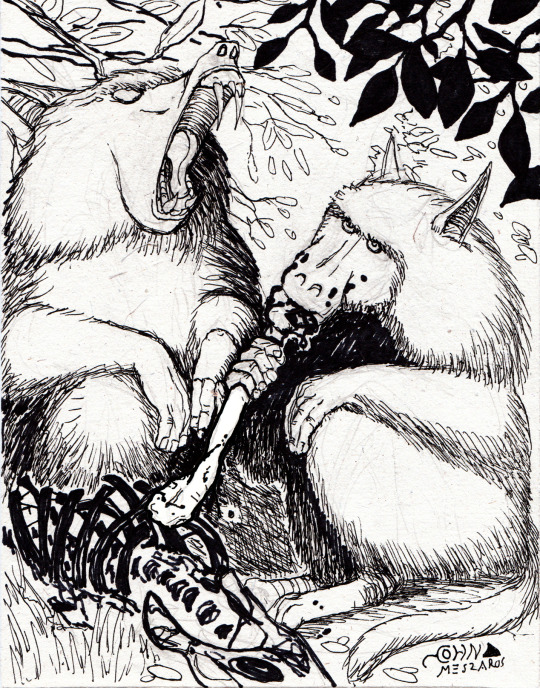
DEVIL MONKEYS- VIRGINIA
Though South America, Central America and southern Mexico have a great diversity of primates, northern North America has none aside from humans. This is ironic given that the earliest known primate- a small, squirrel-like creature called Purgatorius- evolved on this continent. Descendants of Purgatorius and its relatives diversified into several lineages of tarsier- and lemur-like forms that inhabited North America during the warm Eocene epoch before supposedly dying out as the land grew cooler and grasslands became more abundant.
A fossil find in 1960s altered this view when molars from a lemur-like creature dubbed Ekgmowechasala (Sioux for “Little Cat Man”) were unearthed on the Pine Ridge Indian Reservation in South Dakota. This animal lived in the Oligocene, millions of years after other primates were thought to have died out, proving that at least a few of these lines had continued. Though no younger North American primate fossils have been found since, what if descendants of Ekgmowechasala survived into the present day?
In 1959 a couple by the name of Boyd were driving home near Saltville, Virginia when a strange, monkey-like beast attacked their car. They described it as having light “taffy-colored” fur with a white belly, and powerful, muscular legs. Other people in the Saltville area reported seeing a similar creature around the same time.
Then in the 1990s a woman driving on a dark Virginia backroad saw a creature run in front of her car that she described as black and sleek with a long tail, pointy ears, a short-snouted face, a man-like torso, and powerful hind legs. Though the earlier Boyd cryptid bears little resemblance to this animal- and may in fact have been a different species- both incidents have been conflated in pop culture as encounters with what have come to be called devil monkeys.
While the Virginia encounters are the most well-known sightings, devil monkeys have been seen throughout North America. Coweta County, Georgia, for example, is haunted by the Belt Road Booger, a simian creature with a “flat, beaver-like tail covered in hair”. Run-ins with the Booger began in the 1970s, many of them now believed to have been hoaxes by pranksters dressed in gorilla costumes. But other encounters have not yet been fully explained. The Belt Road Booger has become such a local sensation that a taxidermist in Newnan, Georgia even made a fake “Booger” head out of a white-tailed deer’s posterior as a decoration for a friend’s hardware store.
There is also possible photographic evidence of a devil monkey. In 1996 photos surfaced online of a strange, furry, baboon-like carcass lying along the curb of a Louisiana highway. Dubbed the Deridder Roadkill, the body bears a distinct resemblance to descriptions of these cryptids with its long snout, bushy-haired body, and ape-like feet. While some have suggested the carcass was a devil monkey, others have proposed that it could be a rougarou, dogman, or even a chupacabra. More mundane suggestions include a large Pomeranian dog, or even a prop. However, as so often happens in these cases, the body disappeared before samples could be taken, so its identity could not be proved definitively.
Devil monkeys are often said to have powerful kangaroo-like hind legs that allow them to jump huge distances. This feature has led some cryptozoologists to wonder if widely reported “phantom kangaroos” sighted throughout the US and Canada might actually be these animals.
While stories of large non-human North American primates like sasquatch and skunk apes are abundant in folklore and cryptozoology, no fossil evidence for these creatures has been found. Thus if they are real, one could argue that they likely migrated to this continent late in geological history along the same routes that humans used. Devil monkeys, on the other hand, may represent a species of home-grown North American primate possibly descended from Ekgmowechasala or similar animals.
REFERENCES
Eons. (20, November 12). What happened to primates in North America? [Video]. PBS.org. https://www.pbs.org/video/the-first-and-last-north-american-primates-dztigm/#:~:text=Why%20don't%20we%20have,and%20eventually%20they%20all%20disappeared.
Gilly, Steve. (2018, April 20). The Devil Monkey. MountainLore. https://mountainlore.net/2018/04/20/the-devil-monkey/
Grundhauser, Eric. (2016, December 22). Does America have a secret kangaroo population? Atlas Obscura. https://www.atlasobscura.com/articles/does-america-have-a-secret-kangaroo-population
Leftwich, Rebecca. (2023, October 30). Who put the “boo” in the Belt Road Booger? The Newnan Times-Herald. https://www.times-herald.com/news/who-put-the-boo-in-the-belt-road-booger/article_ee9d689e-770f-11ee-a003-8bb851ca9cb4.html
Lynch, Brendan M. (2023, November 6). Fossils tell tale of last primate to inhabit North America before humans. University of Kansas. https://news.ku.edu/2023/11/06/fossil-evidence-tells-tale-last-primate-inhabit-north-america-humans#:~:text=The%20first%20primates%20came%20to,about%2034%20million%20years%20ago.
Morphy, Rob. (2010, January 13). Deridder Roadkill: (Louisiana, USA). Cryptopia. https://www.cryptopia.us/site/2010/01/deridder-roadkill-louisiana-usa/
Morphy, Rob. (2010, December 6). Devil monkeys: (North America). Cryptopia. https://www.cryptopia.us/site/2010/12/devil-monkeys-north-america/
Spooky Appalachia. (2023, April 26). The story of the Virginia devil monkey. [Video]. YouTube. https://www.youtube.com/watch?v=Nsv-mBSEX74
Taylor, Jr. L. B. (2012). Monsters of Virginia. Stackpole Books.
38 notes
·
View notes
Text
¡Chicana Power! - Maylei Blackwell

Hello friends,
Our next recommendation this Latine Heritage Month delves into political history, specifically Chicana politics in the 60’s and 70’s as Chicanas created feminist organizations to fight for their freedom from white supremacy, patriarchy, and capitalist domination: “¡Chicana Power! Contested Histories of Feminism in the Chicano Movement” by Maylei Blackwell.
Dr. Blackwell is Assistant Professor in the César E. Chávez Department of Chicana and Chicano Studies and Women's Studies at UCLA. An interdisciplinary scholar-activist and oral historian, she works with indigenous women's organizers in Mexico, Latin American feminist movements, and sexual rights activists, all of whom are involved in cross-border organizing and community formation.
“¡Chicana Power!” is a study of women's involvement in the Chicano Movement of the late 1960s and 1970s. It explores the emergence of Chicana feminism within student and community-based organizations in southern California and the Southwest, uniquely highlighting the role of pioneering Chicana activist Anna NietoGomez and the Hijas de Cuauhtémoc in promoting women and lesbian liberation and challenging Chicano nationalism and Machismo.
I want to highlight the emphasis on oral history as retrofitting memory throughout the book. As with other examples of feminist auto-biography, Blackwell’s diligent interviewing of the women involved plays a crucial role in uplifting their histories as leaders of their own liberatory struggles and adds the vividness needed when examining their complicated narratives.
Content-wise, we get a rich description of the multiple locations Chicanas came from in forming their political subjectivities and programs. Whether it be focused on the streets or in academia, these women were not part of one single feminist tradition but came from multiple strands all aimed at expanding notions of liberation. Chicanas pushed the bounds of white feminism and male-dominated Chicano politics creatively, not just reacting to external pressures.
I highly recommend everyone, especially Latines, read this text to remember and learn from Chicanas vital activism!
8 notes
·
View notes